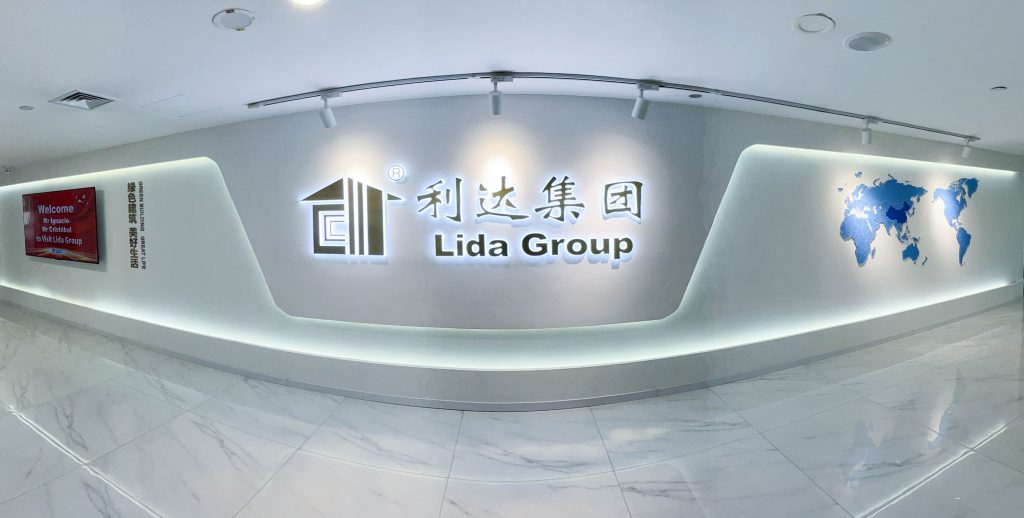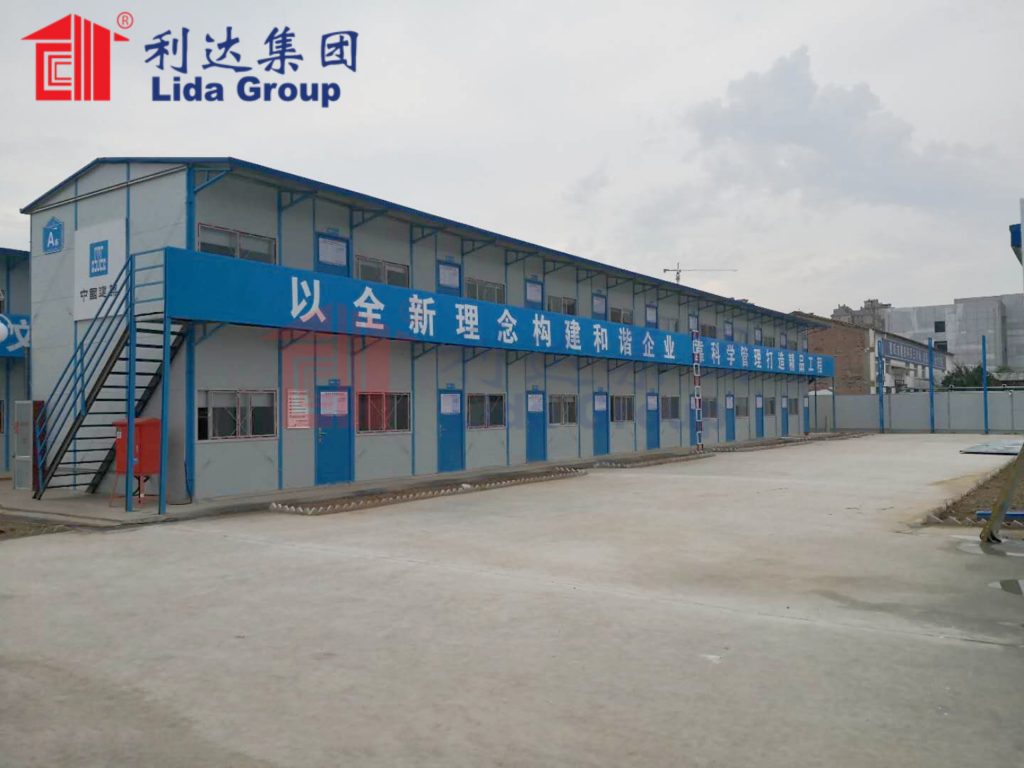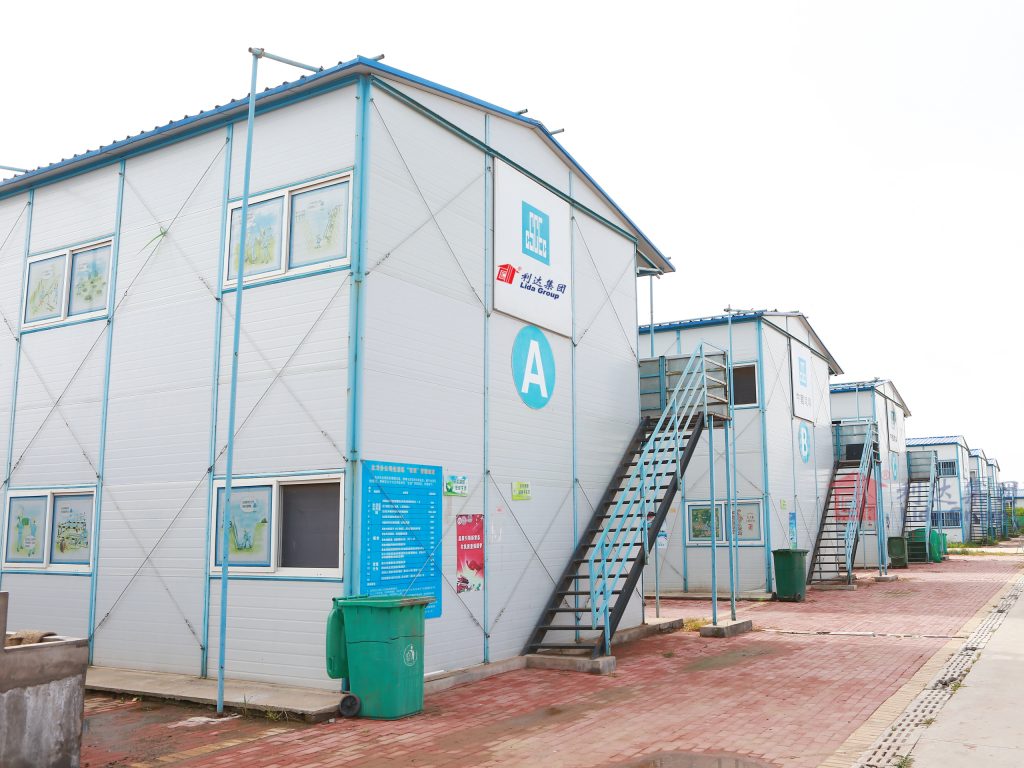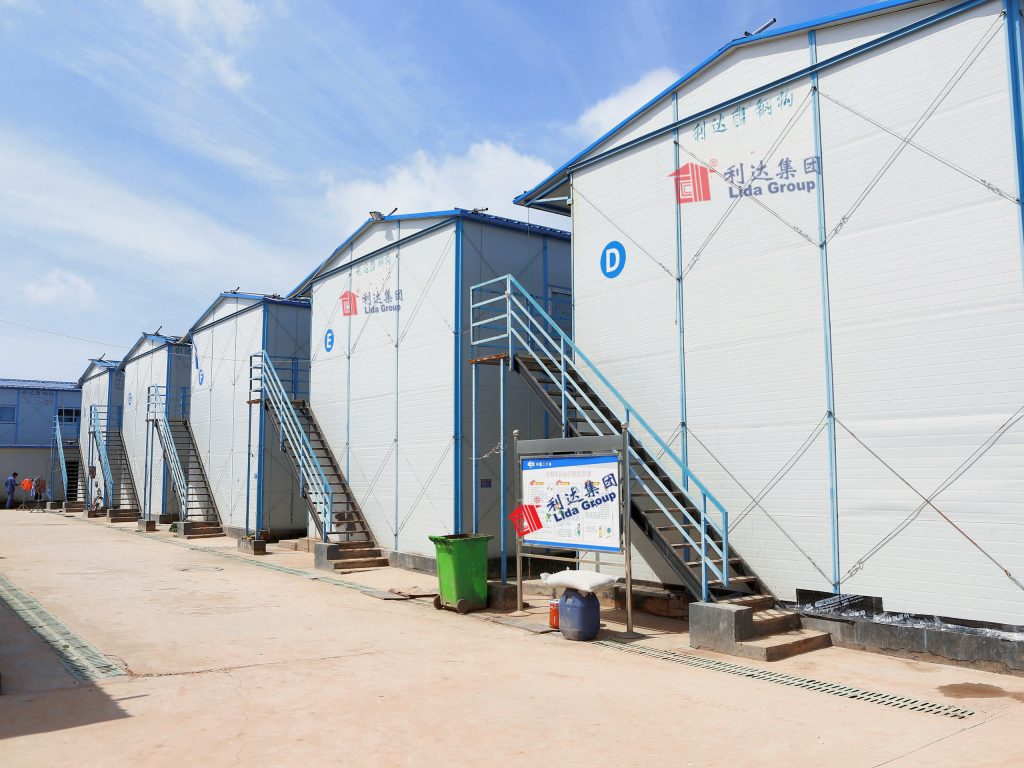**The Climate Resilience Imperative**
As global temperatures become increasingly volatile—ranging from -60°C in Arctic winters to +55°C in desert summers—traditional housing solutions fail to ensure occupant safety, energy efficiency, or structural integrity. Infrastructure must now adapt to extreme thermal gradients, moisture extremes, and environmental stressors without compromising mobility or sustainability. Lida Group’s **Mobile Prefab Houses** leverage advanced sandwich panel architecture to deliver uncompromising performance across Earth’s harshest climates, redefining resilience in habitation design.
Section 1: Climate-Specific Housing Challenges
**1.1 Arctic & Subarctic Environments**
– **Thermal Stressors:**
– Heat loss through conduction/convection (U-value requirements: <0.10 W/m²K)
– Frost heave destabilizing foundations
– Limited daylight for solar gain (3–4 hours in winter)
– **Structural Risks:**
– Snow loads exceeding 5 kN/m²
– Ice accretion damaging envelopes
– Metal embrittlement at <-40°C
**1.2 Hyperarid & Desert Regions**
– **Thermal Stressors:**
– Radiant heat gain (solar reflectance index <25 in conventional builds)
– Diurnal swings >30°C causing material fatigue
– Sand abrasion degrading surfaces
– **Operational Demands:**
– Cooling energy consumption >200 kWh/m²/yr
– Water scarcity complicating HVAC systems
– Dust infiltration compromising air quality
Section 2: Sandwich Panel Engineering for Extreme Adaptation
**2.1 Core Architecture Customization**
*Climate-Optimized Layer Stacks:*
| **Parameter** | **Arctic Configuration** | **Desert Configuration** |
|———————|———————————–|———————————-|
| **Outer Skin** | 0.8mm Titanium-stabilized steel | 0.7mm Al-Zn alloy (SRI 92) |
| **Primary Insulation** | 250mm Vacuum Insulation Panel (λ=0.008 W/mK) | 150mm PIR foam + 50mm Aerogel (λ=0.015 W/mK) |
| **Vapor Control** | Intelligent membranes (variable permeability) | Reflective foil radiant barrier |
| **Inner Skin** | 16mm MgO board with PCM infusion | FRP composite (moisture-proof) |
**2.2 Performance Benchmarks**
| **Metric** | **Arctic Performance** | **Desert Performance** |
|————————-|—————————–|—————————–|
| **Thermal Resistance** | R-60 (U=0.09 W/m²K) | R-35 (U=0.16 W/m²K) |
| **Airtightness** | 0.15 ACH@50Pa | 0.18 ACH@50Pa |
| **Solar Reflectance** | N/A | SRI 87 |
| **Structural Load** | 7.5 kN/m² snow load | 150 km/h sandstorm resistance |
Section 3: Climate-Specific System Integration
**3.1 Arctic Survival Systems**
– **Foundation Technology:**
– Thermally broken screw piles preventing permafrost thaw
– Hydraulic auto-leveling for frost heave compensation (±15cm)
– **Energy Harvesting:**
– Vertical-axis wind turbines integrated into corners
– Low-angle photovoltaic arrays capturing polar sun
– **Health/Safety:**
– ERV with humidity recovery (85% efficiency)
– Ultraviolet-C air sterilization combating airborne pathogens
**3.2 Desert Survival Systems**
– **Thermal Management:**
– Radiant cooling ceilings using geothermal loops
– Phase-change materials (PCMs) absorbing daytime heat
– **Water Independence:**
– Atmospheric water generators yielding 40L/day
– Greywater recycling for evaporative cooling
– **Dust Mitigation:**
– Electrostatic air filters with auto-cleaning cycles
– Airlock entrances with positive-pressure ventilation
Section 4: Field Validation Across Extremes
**4.1 Arctic Research Station (Canadian Archipelago)**
– **Conditions:** -52°C winter, 98-day darkness, 4.2m snow depth
– **Implementation:**
– 12-person mobile habitat with R-60 panels
– Subfloor heat recovery from diesel generators
– **Results:**
– Interior maintained 21°C ±1°C
– Heating energy: 18 kWh/m²/yr (vs. 220+ in legacy stations)
– Zero structural ice accumulation over 3 winters
**4.2 Desert Mining Camp (Sahara)**
– **Conditions:** 51°C peak, 0% humidity, silica dust storms
– **Implementation:**
– 200-unit village with SRI 90 exteriors
– Closed-loop water-cooled PCM system
– **Results:**
– Cooling energy reduced by 71% vs. ISO containers
– Internal PM2.5 levels <5 μg/m³ during sandstorms
– Water consumption cut 65% via atmospheric harvesting
Section 5: Mobility & Deployment Innovations
**5.1 Extreme Logistics Engineering**
– **Arctic Transport:**
– Skid-mounted units towed by ice road trains
– Helicopter-slung modules (<3,500kg)
– **Desert Transport:**
– Sand-resistant track systems for self-propelled movement
– Foldable designs enabling C-130 aircraft deployment
**5.2 Rapid Assembly Protocols**
– **Arctic:**
– Foundation-free installation on snow pads (2 hours/module)
– Exoskeleton-mounted cranes avoiding ice penetration
– **Desert:**
– Solar-powered robotic assembly (6 units/day)
– Drone-guided positioning minimizing human exposure
Section 6: Sustainability & Circularity
**6.1 Carbon Impact Comparison**
| **Metric** | **Traditional Build** | **Lida Arctic** | **Lida Desert** |
|————————-|———————-|—————–|—————–|
| Embodied Carbon (kgCO₂e/m²) | 480 | 310 (-35%) | 290 (-40%) |
| Operational Carbon (kgCO₂e/m²/yr) | 82 | 19 (-77%) | 24 (-71%) |
| Expected Lifespan | 15 years | 30+ years | 25+ years |
**6.2 Circular Design Features**
– **Material Passporting:** Blockchain-tracked components for reuse
– **Design for Disassembly:** Bolted connections replacing adhesives
– **End-of-Life Recovery:** 92% material recyclability rate
—
Section 7: Industry Transformation Drivers
**7.1 Economic Incentives**
| **Factor** | **Arctic Savings** | **Desert Savings** |
|————————-|————————–|————————-|
| Energy Costs | $42,000/unit/year | $37,000/unit/year |
| Deployment Speed | 11 weeks faster | 14 weeks faster |
| Relocation Cost | 80% reduction | 75% reduction |
**7.2 Regulatory Compliance**
– **Arctic Certifications:**
– CAN/CSA S37 (Antarctic Structures)
– ISO 19906 (Arctic Offshore Structures)
– **Desert Certifications:**
– GSAS 5-Star (Gulf Region)
– LEED v4.1 BD+C Gold equivalency
—
Conclusion: Engineering the Climate-Proof Future
Lida Group’s mobile prefab houses represent a quantum leap in climate-adaptive design, demonstrating that human habitation can thrive from -60°C to +55°C through precision engineering. Key achievements include:
**Scientific Integration:**
– **Material Science:** VIPs, PCMs, and nano-coated skins creating thermal fortresses
– **Energy Systems:** Climate-specific harvesting (polar wind/desert solar) enabling off-grid resilience
– **Structural Innovation:** Frost-heave foundations and sandstorm-resistant joints
**Operational Superiority:**
– 68–77% operational energy reduction versus conventional builds
– 75–80% faster deployment in inaccessible terrain
– 60+% water autonomy in hyperarid zones
**Global Implications:**
1. **Climate Migration:** Deployable housing for displaced populations
2. **Critical Infrastructure:** Disaster-resistant hospitals, schools, and command centers
3. **Sustainable Exploration:** Enabling low-impact operations in fragile ecosystems
The Arctic-to-Desert performance spectrum proves that “one-size-fits-all” construction is obsolete. By tailoring sandwich panel technology to opposing environmental extremes—without sacrificing mobility or circularity—Lida Group establishes a new paradigm: **structures that don’t merely endure their environment, but intelligently harmonize with it**. As climate volatility intensifies, this adaptive architecture offers more than shelter—it delivers assured survivability, redefining what’s possible at humanity’s climatic frontiers.

Related news
-
Eco-Conscious Innovation: Lida Group's High Quality Prefab Houses Reduce Energy Use by 40% with Advanced Sandwich Panels
2025-07-15 14:02:39
-
Construction Industry Shift: Major Firms Adopt Lida Group's Mobile SANDWICH PANEL HOUSE Solutions for Temporary Site Offices
2025-07-15 15:53:33
-
Customizable Living Spaces: Lida Group Delivers Mobile Prefab Houses with Flexible SANDWICH PANEL HOUSE Configurations
2025-07-15 11:49:56
contact us
- Tel: +86-532-88966982
- Whatsapp: +86-13793209022
- E-mail: sales@lidajituan.com






